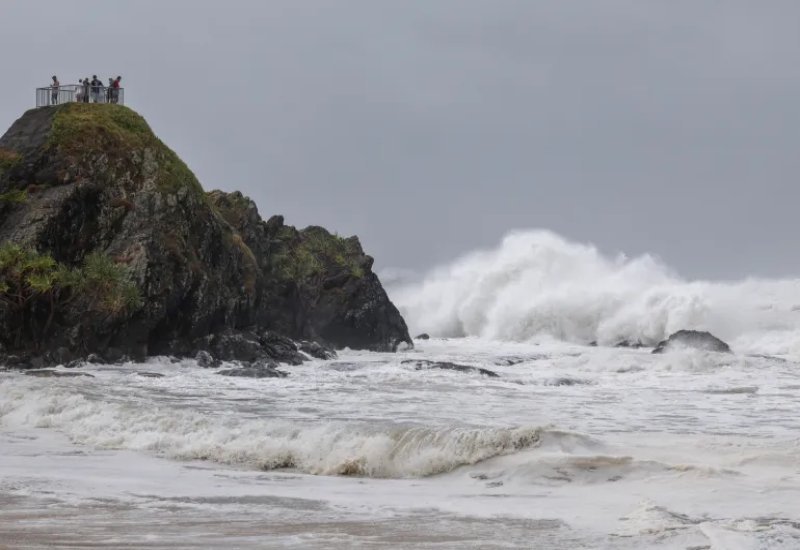- Tropical Cyclone Alfred lingers off Australia’s eastern coast.
- Over four million people at risk along a 400-kilometre stretch.
- A 12.4-meter wave recorded on the Gold Coast.
- Cyclone expected to make landfall on Friday or Saturday.
- Thousands without power; schools closed.
Tropical Cyclone Alfred continues to impact Australia’s eastern coast, bringing strong winds, heavy rain, and record-breaking waves. The storm, located 250 kilometers east of Brisbane by Thursday afternoon, is moving slowly and unpredictably. Over four million people are at risk as the cyclone tracks along a 400-kilometre stretch of coastline.
“The storm is slow-moving, and we are seeing significant gales developing on the coastal fringe,” said Sarah Scully, a Bureau of Meteorology forecaster. “The waves and swells have been generated by Alfred’s prolonged presence in the Coral Sea.”
Surfer’s Recklessness and Storm’s Slow Approach
A massive 12.4-meter (40-foot) wave recorded off the Gold Coast became the largest ever observed at the station. Despite clear warnings, some surfers ignored them and ventured into the dangerous waters. They took a huge risk, facing potential heavy fines for their reckless actions.
Donna Gates, acting mayor of the Gold Coast, expressed her shock and frustration. “I am just staggered that people would be so stupid. It is a huge act of stupidity,” she said. Clearly, she was referring to the surfers who disregarded safety advice, putting their lives at risk.
Meanwhile, Alfred, the approaching cyclone, is moving slowly at just 7 kilometers per hour (4 mph). As a result, coastal areas will experience prolonged exposure to strong winds and rainfall. Initially, experts expected the cyclone to make landfall Thursday night, but now it seems set to strike Friday or Saturday.
“Being slow-moving means that the coastal areas are exposed for a longer period,” said Scully. “Some areas have already received over 200 millimeters (8 inches) of rain.” As the storm moves closer, it continues to strengthen, putting more strain on affected regions.
Brisbane at Risk of Landfall
Cyclone Alfred is expected to make landfall near Brisbane, the first cyclone to hit the area in more than 50 years. With over 4 million people at risk, officials have urged residents to stay prepared and follow safety measures.
“This is an extraordinary event for Brisbane and the surrounding areas,” said senior government minister Jim Chalmers. “Cyclones rarely make it this far south.”
Power Outages and School Closures
The storm has already knocked out power to more than 4,000 homes, and thousands of people are without electricity. In addition, more than 900 schools in Queensland and northern New South Wales were closed on Thursday as a precaution.
In the coastal town of Ballina, the “Big Prawn” sculpture was damaged by the strong winds, with one of its fiberglass feelers snapped off. Residents are shocked by the destruction of the iconic landmark.
Cyclone Alfred’s Unpredictable Path
Cyclones usually form in the warm waters of northern Australia. However, Alfred’s path is different. In fact, it’s only the second cyclone in over 50 years to make it this far south. As a result, officials are now preparing for a longer impact than usual.
“Cyclones in this region are rare, but they are becoming more frequent due to climate change,” said Chalmers. “This highlights the changing weather patterns we must adapt to.”
Meanwhile, Alfred’s unpredictable movement is raising concerns along the eastern coast. With record-breaking waves, strong winds, and heavy rainfall, the storm has already caused power outages and forced school closures. As the cyclone nears landfall, authorities are closely monitoring the situation.


